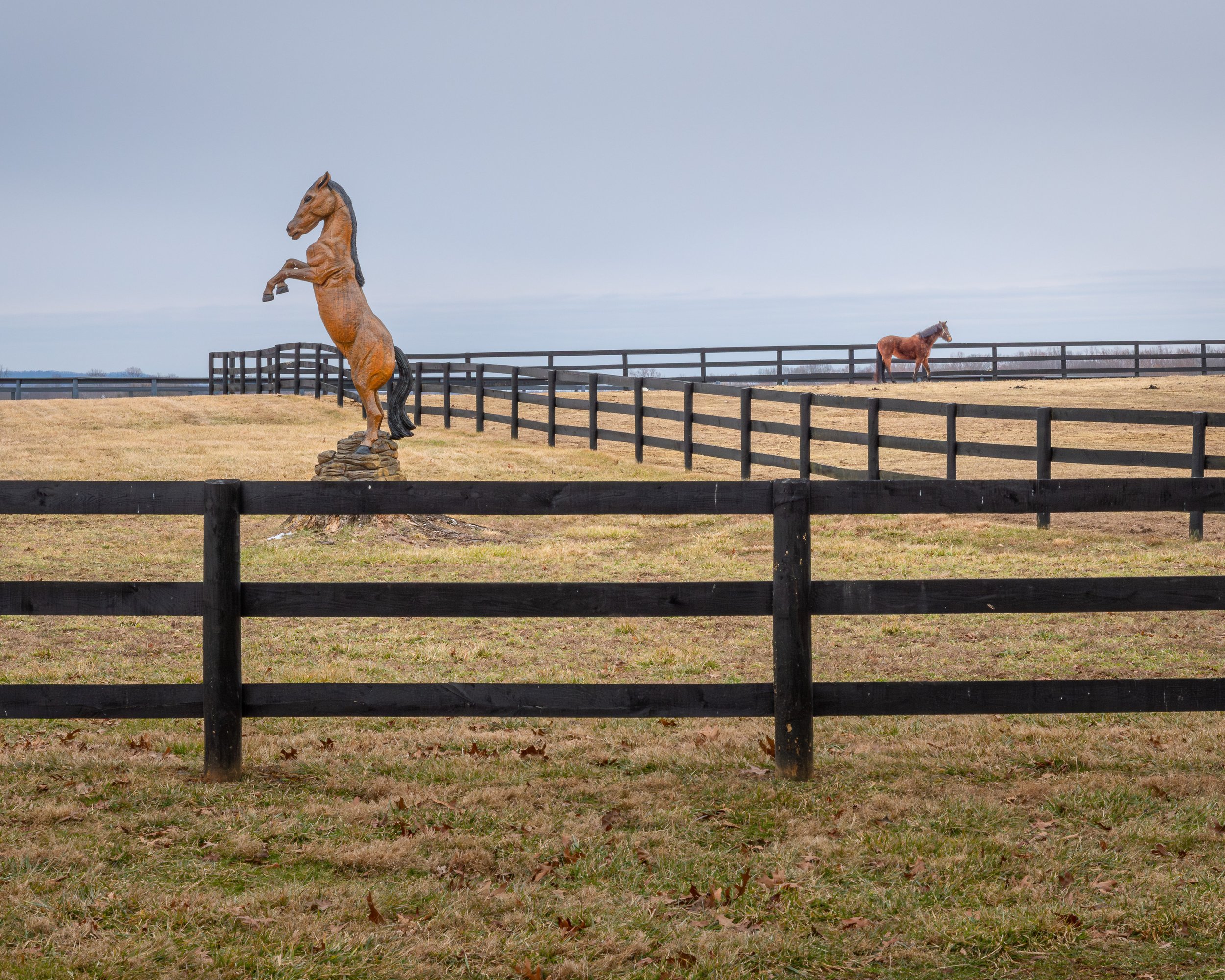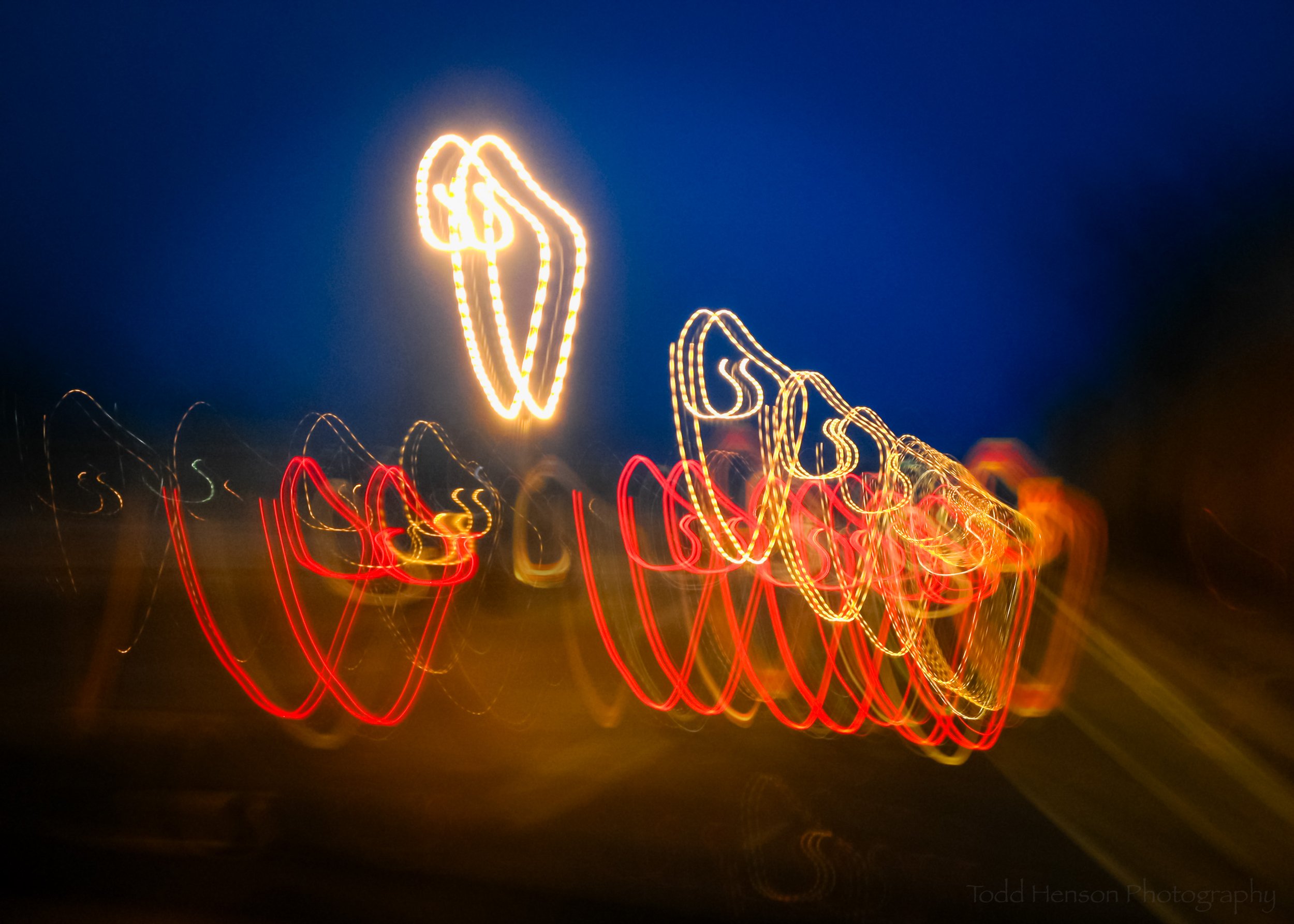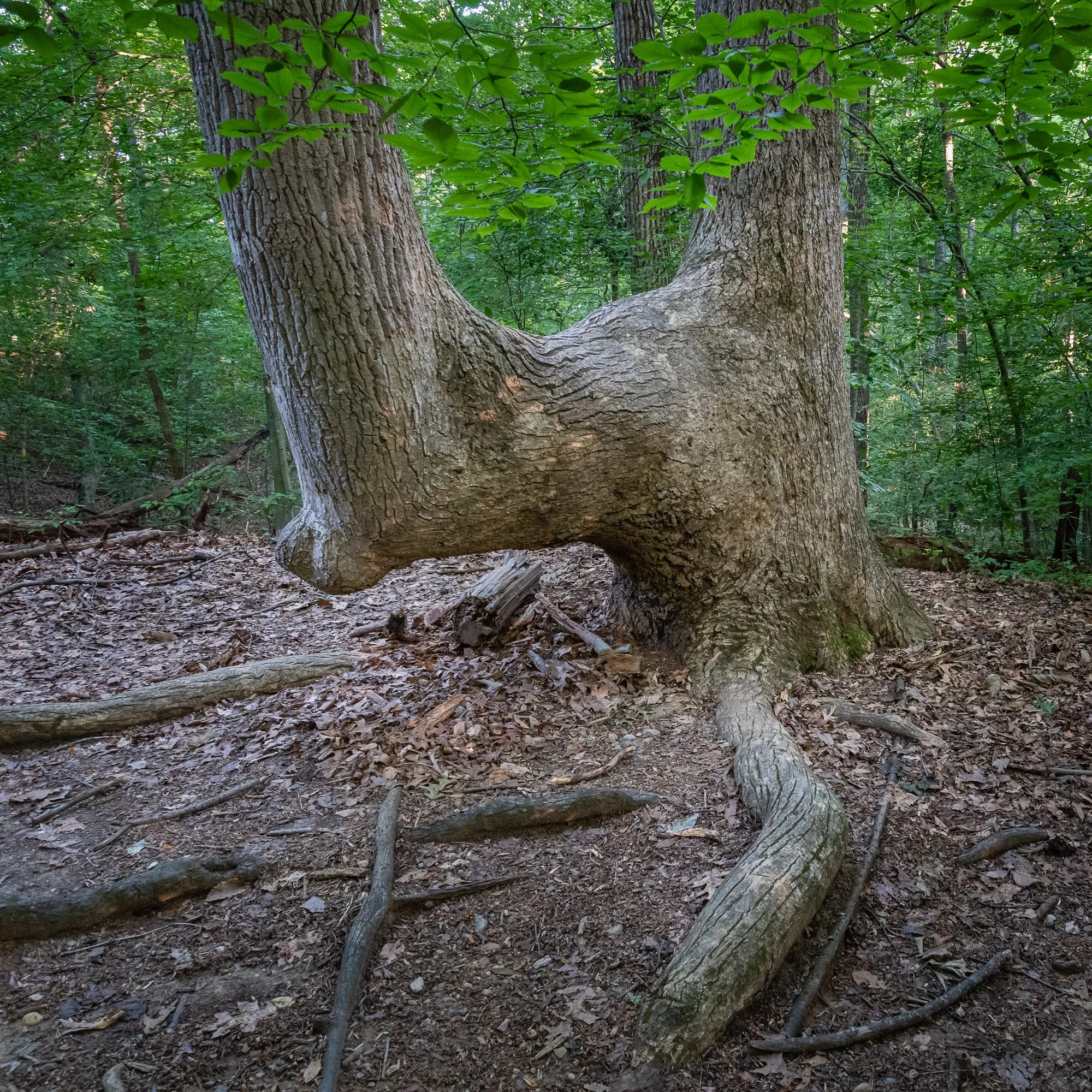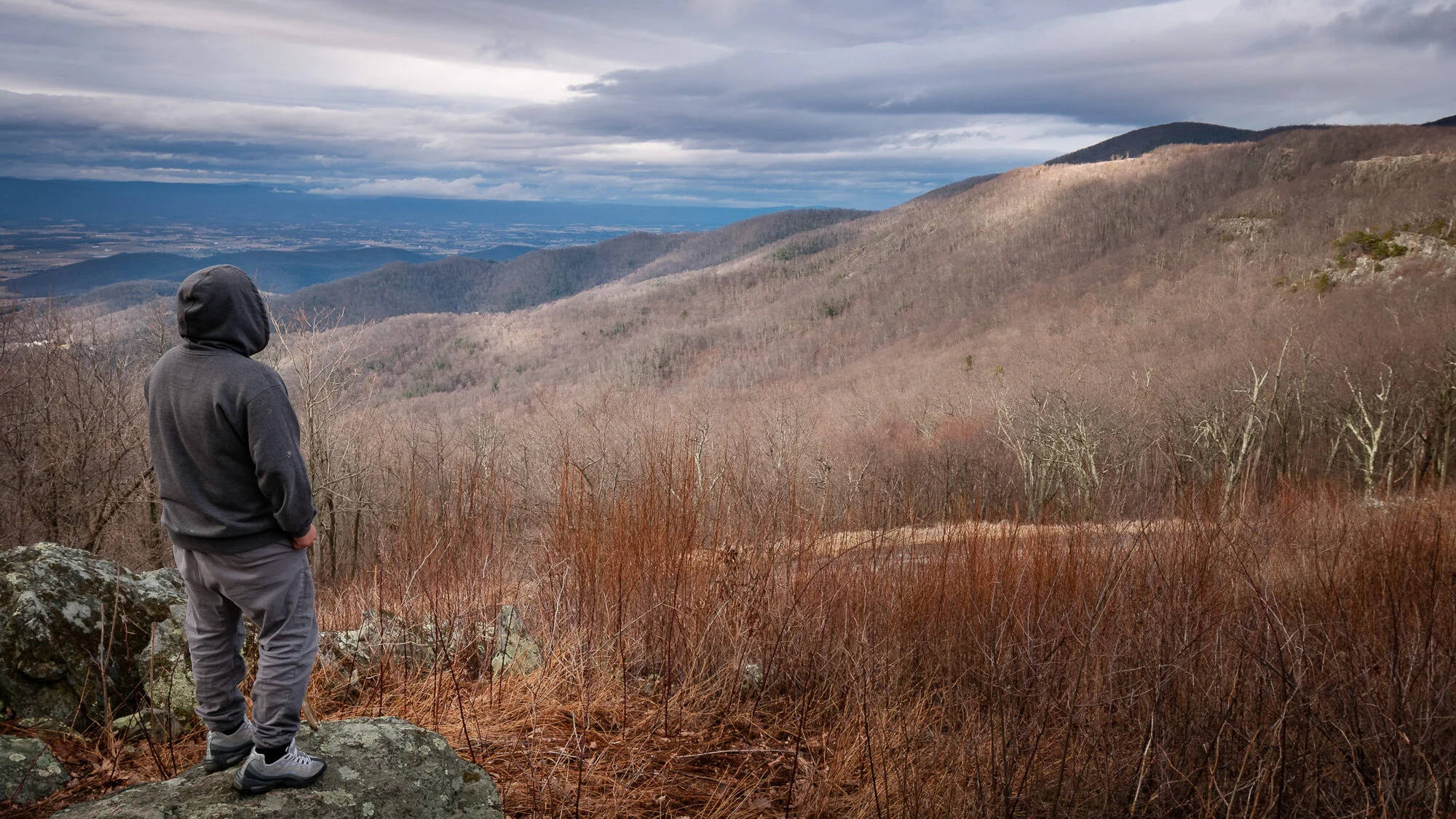Small cluster of young Ringless Honey Mushrooms
I found the mushrooms above in one of my favorite parks along a wooded path in late August. I believe these are young Ringless Honey Mushrooms, also known as Armillaria Tabescens, that grow on the roots of hardwood trees in eastern North America. There were several small clusters in the area, all growing on the forest floor below hardwood trees.
It was still early in the day and the trees were filtering the sunlight, creating a soft light on the mushrooms. I thought these might look nice shot with a shallow depth of field and a completely out of focus background, so I took the camera off the tripod and lay down on my stomach, resting the camera on the ground in front of me to get a ground-level view of the cluster of young mushrooms.
Achieving a shallow depth of field was fairly easy with the long lens I had with me. I shot at 440mm and was as close as I could get to the mushrooms and still focus (around 6 or 7 feet). I used an aperture of f/6.3 and given the level of light I boosted the ISO to 1600 to get a shutter speed of 1/60 second. As you can see, this allows for a fairly shallow depth of field.
But looking at the photo now I realize I should have attempted a few shots with smaller apertures to increase the depth of field and get a little more of the mushroom cluster in focus. There wasn’t anything directly behind the mushrooms, so I could easily have kept the background out of focus. I love shallow depth of field, but I need to constantly remind myself to also create images with a larger depth of field. Maybe an aperture of f/8 or f/11 would have been better. I should have experimented more.
So next time you’re out in the woods, take a moment to look down. Maybe you’ll find an interesting mushroom along the forest floor, something worth photographing, or at least worth studying. And if you do choose to photograph the mushroom take the time to work the subject, experiment, try large apertures for shallow depth of field, but also try smaller apertures for more depth of field. Perhaps even try a very narrow aperture to capture the entire scene in focus showing the mushroom in its environment. It only takes a few extra minutes to work the subject, and it’s almost always worth the time.
Do you enjoy these posts?
Sign up to receive periodic emails with updates and thoughts. Don’t worry, I won’t spam you. And please consider purchasing artwork or products from my online store, and using my affiliate links in the sidebar to the right when shopping online.
I appreciate your support!



























